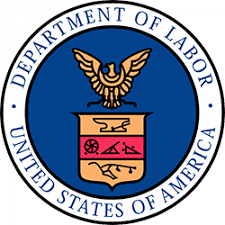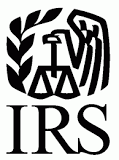On March 31, 2020, the IRS issued 66 Q&As providing guidance regarding refundable tax credits available to reimburse employers with less than 500 employees small and midsize employers dollar-for-dollar for the cost of providing paid sick and family leave wages to their employees for leave related to COVID-19.
Highlights of the Q&As are below.
The full Q&As are available here.
Webinar “Guide to Employer Tax Credits Under the Families First Coronavirus Response Act”
Register to join us for one of our two webinar sessions where ERISA Benefits Law attorney Erwin Kratz will discuss the steps private businesses with less than 500 Employees need to take to document and claim the refundable tax credits.
First opportunity: Saturday, April 4, 2020, 11:00 AM Arizona (11:00 am PDT; noon MDT; 1:00 pm CDT; 2:00 pm EDT). Register in advance for this webinar:
https://zoom.us/meeting/register/vpEtc-uhpjguuGQpGFcjhlA7aJJvjDpNSQ
Second opportunity: Monday, April 6, 2020, 11:00 AM Arizona (11:00 AM PDT; noon MDT; 1:00 PM CDT; 2:00 pm EDT). Register in advance for this webinar:
https://zoom.us/meeting/register/v5ctc–qrj4u8iZJx-CbnY2g-c7zZeigKg
Highlights of the Q&As
Determining the Amount of Allocable Qualified Health Plan Expenses
“Qualified health plan expenses” are amounts paid or incurred by the Eligible Employer to provide and maintain a group health plan (as defined in section 5000(b)(1) of the Internal Revenue Code (the “Code”)), but only to the extent that those amounts are excluded from the gross income of employees by reason of section 106(a) of the Code.
Generally, the tax credits for qualified sick leave wages and qualified family leave wages are increased by the qualified health plan expenses allocable to each type of qualified leave wages. Qualified health plan expenses are properly allocated to the qualified sick or family leave wages if the allocation is made on a pro rata basis among covered employees (for example, the average premium for all employees covered by a policy) and pro rata on the basis of periods of coverage (relative to the time periods of leave to which such wages relate).
31. Does the amount of qualified health plan expenses include both the portion of the cost paid by the Eligible Employer and the portion of the cost paid by the employee?
The amount of qualified health plan expenses taken into account in determining the credits generally includes both the portion of the cost paid by the Eligible Employer and the portion of the cost paid by the employee with pre-tax salary reduction contributions. However, the qualified health plan expenses should not include amounts that the employee paid for with after-tax contributions.
32. For an Eligible Employer that sponsors more than one plan for its employees (for example, both a group health plan and a health flexible spending arrangement (health FSA)), or more than one plan covering different employees, how are the qualified health plan expenses for each employee determined?
The qualified health plan expenses are determined separately for each plan. Then, for each plan, those expenses are allocated to the employees who participate in that plan. In the case of an employee who participates in more than one plan, the allocated expenses of each plan in which the employee participates are aggregated for that employee.
33. For an Eligible Employer who sponsors a fully-insured group health plan, how are the qualified health plan expenses of that plan allocated to the qualified sick or family leave wages on a pro rata basis?
An Eligible Employer who sponsors a fully-insured group health plan may use any reasonable method to determine and allocate the plan expenses, including (1) the COBRA applicable premium for the employee typically available from the insurer, (2) one average premium rate for all employees, or (3) a substantially similar method that takes into account the average premium rate determined separately for employees with self-only and other than self-only coverage.
If an Eligible Employer chooses to use one average premium rate for all employees, the allocable amount for each day an employee covered by the insured group health plan is entitled to qualified leave wages could be determined using the following steps:
- The Eligible Employer’s overall annual premium for the employees covered by the policy is divided by the number of employees covered by the policy to determine the average annual premium per employee.
- The average annual premium per employee is divided by the average number of work days during the year by all covered employees (treating days of paid leave as a work day and a work day as including any day on which work is performed) to determine the average daily premium per employee. For example, a full-year employee working five days per week may be treated as working 52 weeks x 5 days or 260 days. Calculations for part-time and seasonal employees who participate in the plan should be adjusted as appropriate. Eligible Employers may use any reasonable method for calculating part-time employee work days.
- The resulting amount is the amount allocated to each day of qualified sick or family leave wages.
Example: An Eligible Employer sponsors an insured group health plan that covers 400 employees, some with self-only coverage and some with family coverage. Each employee is expected to have 260 work days a year. (Five days a week for 52 weeks.) The employees contribute a portion of their premium by pre-tax salary reduction, with different amounts for self-only and family. The total annual premium for the 400 employees is $5.2 million. (This includes both the amount paid by the Eligible Employer and the amounts paid by employees through salary reduction.)
For an Eligible Employer using one average premium rate for all employees, the average annual premium rate is $5.2 million divided by 400, or $13,000. For each employee expected to have 260 work days a year, this results in a daily average premium rate equal to $13,000 divided by 260, or $50. That $50 is the amount of qualified health expenses allocated to each day of paid sick or family leave per employee.
34. For an Eligible Employer who sponsors a self-insured group health plan, how are the qualified health plan expenses of that plan allocated to the qualified leave wages on a pro rata basis?
An Eligible Employer who sponsors a self-insured group health plan may use any reasonable method to determine and allocate the plan expenses, including (1) the COBRA applicable premium for the employee typically available from the administrator, or (2) any reasonable actuarial method to determine the estimated annual expenses of the plan.
If the Eligible Employer uses a reasonable actuarial method to determine the estimated annual expenses of the plan, then rules similar to the rules for insured plans are used to determine the amount of expenses allocated to an employee. That is, the estimated annual expense is divided by the number of employees covered by the plan, and that amount is divided by the average number of work days during the year by the employees (treating days of paid leave as work days and any day on which an employee performs any work as work days). The resulting amount is the amount allocated to each day of qualified sick or family leave wages.
35. For an Eligible Employer who sponsors a health savings account (HSA), or Archer Medical Saving Account (Archer MSA) and a high deductible health plan (HDHP), are contributions to the HSA or Archer MSA included in the qualified health plan expenses?
The amount of qualified health plan expenses does not include Eligible Employer contributions to HSAs or Archer MSAs. Eligible Employers who sponsor an HDHP should calculate the amount of qualified expenses in the same manner as an insured group health plan, or a self-insured plan, as applicable.
36. For an Eligible Employer who sponsors a health reimbursement arrangement (HRA), a health flexible spending arrangement (health FSA), or a qualified small employer health reimbursement arrangement (QSEHRA), are contributions to the HRA, health FSA, or QSEHRA included in the qualified health plan expenses?
The amount of qualified health plan expenses may include contributions to an HRA (including an individual coverage HRA), or a health FSA, but does not include contributions to a QSEHRA. To allocate contributions to an HRA or a health FSA, Eligible Employers should use the amount of contributions made on behalf of the particular employee.
How to Claim the Credits
37. How does an Eligible Employer claim the refundable tax credits for qualified leave wages (plus any allocable qualified health plan expenses and the amount of the Eligible Employer’s share of Medicare tax)?
Eligible Employers will report their total qualified leave wages and the related credits for each quarter on their federal employment tax returns, usually Form 941, Employer’s Quarterly Federal Tax Return. Form 941 is used to report income and social security and Medicare taxes withheld by the employer from employee wages, as well as the employer’s portion of social security and Medicare tax.
In anticipation of receiving the credits, Eligible Employers can fund qualified leave wages (and allocable qualified health plan expenses and the Eligible Employer’s share of Medicare tax on the qualified leave wages) by accessing federal employment taxes, including withheld taxes, that are required to be deposited with the IRS or by requesting an advance from the IRS.
For more information on ways Eligible Employers can access funds for the credit before filing the Form 941, see “How can an Eligible Employer that is required to pay qualified leave wages fund the payment of these wages if the Eligible Employer does not have sufficient federal employment taxes set aside for deposit to cover those payments? Can the employer get an advance of the credits?”
38. Can an Eligible Employer required to pay qualified leave wages fund these payments before receiving the credits by reducing its federal employment tax deposits?
An Eligible Employer may fund the qualified leave wages (and allocable qualified health plan expenses and the Eligible Employer’s share of Medicare tax on the qualified leave wages) by accessing federal employment taxes, including those that the Eligible Employer already withheld, that are set aside for deposit with the IRS, for other wage payments made during the same quarter as the qualified leave wages.
That is, an Eligible Employer that pays qualified leave wages to its employees in a calendar quarter before it is required to deposit federal employment taxes with the IRS for that quarter may reduce the amount of federal employment taxes it deposits for that quarter by the amount of the qualified leave wages (and allocable qualified health plan expenses and the Eligible Employer’s share of Medicare tax on the qualified leave wages) paid in that calendar quarter. The Eligible Employer must account for the reduction in deposits on the Form 941, Employer’s Quarterly Federal Tax Return, for the quarter.
Example: An Eligible Employer paid $5,000 in qualified sick leave wages and qualified family leave wages (and allocable health plan expenses and the Eligible Employer’s share of Medicare tax on the qualified leave wages) and is otherwise required to deposit $8,000 in federal employment taxes, including taxes withheld from all of its employees, for wage payments made during the same quarter as the $5,000 in qualified leave wages. The Eligible Employer may keep up to $5,000 of the $8,000 of taxes the Eligible Employer was going to deposit, and it will not owe a penalty for keeping the $5,000. The Eligible Employer is then only required to deposit the remaining $3,000 on its required deposit date. The Eligible Employer will later account for the $5,000 it retained when it files Form 941, Employer’s Quarterly Federal Tax Return, for the quarter.
For more information about relief under the FFCRA from failure to deposit penalties for failure to timely deposit certain federal employment taxes, see Notice 2020-22 (PDF) and “May an Eligible Employer reduce its federal employment tax deposit by the qualified leave wages that it has paid without incurring a failure to deposit penalty?”
39. Is an Eligible Employer that reduces its federal employment tax deposits to fund qualified leave wages that it has paid subject to penalty for failing to deposit federal employment taxes?
No, provided the Eligible Employer does not claim an advance for the same portion of the anticipated credits it relied upon to reduce its deposits. That is, without being subject to a penalty for failing to deposit federal employment taxes under section 6656 of the Internal Revenue Code, an Eligible Employer that has paid qualified leave wages to its employees in a calendar quarter before it is required to deposit federal employment taxes with the IRS may reduce the amount of the federal employment tax deposit by the amount of the qualified leave wages (and allocable qualified health plan expenses plus the Eligible Employer’s share of Medicare tax on the qualified leave wages) paid by the employer in that calendar quarter, as long as the employer does not also seek an advance credit for the same amount. The total amount of any reduction in any required deposit may not exceed the total amount of qualified leave wages (and allocable qualified health plan expenses and the Eligible Employer’s share of Medicare tax on the qualified leave wages) in the calendar quarter, minus any amount of qualified leave wages (and allocable qualified health plan expenses and the Eligible Employer’s share of Medicare tax on the qualified leave wages) that had been previously used (1) to reduce a prior required deposit in the calendar quarter and obtain the relief provided by this notice or (2) to seek payment of an advance credit.
For more information about relief under the FFCRA from failure to deposit penalties for failure to timely deposit certain federal employment taxes, see Notice 2020-22 (PDF), and “May an Eligible Employer reduce its federal employment tax deposit by the qualified leave wages that it has paid without incurring a failure to deposit penalty?”
41. If the qualified leave wages (and any allocable qualified health plan expenses and the Eligible Employer’s share of Medicare tax on the qualified leave wages) exceed the Eligible Employer’s share of social security tax owed for a quarter, how does the Eligible Employer get a refund of the excess credits? Does this affect what the Eligible Employer puts on its Form 941?
The amount of qualified leave wages (and any allocable qualified health plan expenses and the Eligible Employer’s share of the Medicare tax on the qualified leave wages) in excess of the social security tax the Eligible Employer owes for the quarter is refundable. If the amount of the credits exceeds the employer portion of social security tax, then the excess is treated as an overpayment and refunded to the employer under sections 6402(a) or 6413(a) of the Internal Revenue Code. Consistent with its treatment as an overpayment, the excess will be applied to offset any remaining tax liability on the Form 941, Employer’s Quarterly Federal Tax Return, and the amount of any remaining excess will be reflected as an overpayment on the Form 941. Like other overpayments of federal taxes, the overpayment will be subject to offset under section 6402(a) of the Code prior to being refunded to the employer.
42. How does an Eligible Employer obtain Form 7200 and where should it send its completed form to receive the advance credit?
An Eligible Employer may obtain the Form 7200, Advance Payment of Employer Credits Due to COVID-19, and may fax its completed form to 855-248-0552.
How Should an Employer Substantiate Eligibility for Tax Credits for Qualified Leave Wages?
44. What information should an Eligible Employer receive from an employee and maintain to substantiate eligibility for the sick leave or family leave credits?
An Eligible Employer will substantiate eligibility for the sick leave or family leave credits if the employer receives a written request for such leave from the employee in which the employee provides:
- The employee’s name;
- The date or dates for which leave is requested;
- A statement of the COVID-19 related reason the employee is requesting leave and written support for such reason; and
- A statement that the employee is unable to work, including by means of telework, for such reason.
In the case of a leave request based on a quarantine order or self-quarantine advice, the statement from the employee should include the name of the governmental entity ordering quarantine or the name of the health care professional advising self-quarantine, and, if the person subject to quarantine or advised to self-quarantine is not the employee, that person’s name and relation to the employee.
In the case of a leave request based on a school closing or child care provider unavailability, the statement from the employee should include the name and age of the child (or children) to be cared for, the name of the school that has closed or place of care that is unavailable, and a representation that no other person will be providing care for the child during the period for which the employee is receiving family medical leave and, with respect to the employee’s inability to work or telework because of a need to provide care for a child older than fourteen during daylight hours, a statement that special circumstances exist requiring the employee to provide care.
45. What additional records should an Eligible Employer maintain to substantiate eligibility for the sick leave or family leave credit?
An Eligible Employer will substantiate eligibility for the sick leave or family leave credits if, in addition to the information set forth in FAQ 44 (“What information should an Eligible Employer receive from an employee and maintain to substantiate eligibility for the sick leave or family leave credits?”), the employer creates and maintains records that include the following information:
- Documentation to show how the employer determined the amount of qualified sick and family leave wages paid to employees that are eligible for the credit, including records of work, telework and qualified sick leave and qualified family leave.
- Documentation to show how the employer determined the amount of qualified health plan expenses that the employer allocated to wages. See FAQ 31 (“Determining the Amount of Allocable Qualified Health Plan Expenses”) for methods to compute this allocation.
- Copies of any completed Forms 7200, Advance of Employer Credits Due To COVID-19, that the employer submitted to the IRS.
- Copies of the completed Forms 941, Employer’s Quarterly Federal Tax Return, that the employer submitted to the IRS (or, for employers that use third party payers to meet their employment tax obligations, records of information provided to the third party payer regarding the employer’s entitlement to the credit claimed on Form 941).
46. How long should an Eligible Employer maintain records to substantiate eligibility for the sick leave or family leave credit?
An Eligible Employer should keep all records of employment taxes for at least 4 years after the date the tax becomes due or is paid, whichever comes later. These should be available for IRS review.
Periods of Time for Which Credits are Available
48. Are wage payments for qualified leave wages made after December 31, 2020, but for periods of leave taken before December 31, 2020, eligible for the credits?
Yes. Notice 2020-21 provides that the payroll credits for paid qualified sick leave wages and paid qualified family leave wages apply to those wages paid for periods beginning on April 1, 2020 and ending on December 31, 2020. While the wages can only be for periods of leave between April 1, 2020, and December 31, 2020, a payment of qualified leave wages that is made after the end of this period may nonetheless be eligible for the credits if the wages are for leave that an employee took between April 1, 2020, and December 31, 2020.
For more information, see Notice 2020-21 (PDF).
Special Issues for Employers: Taxation and Deductibility of Tax Credits
49. What amount does an Eligible Employer receiving tax credits for qualified leave wages (and allocable qualified health plan expenses and the Eligible Employer’s share of Medicare tax on the qualified leave wages) need to include in income?
An Eligible Employer must include the full amount of the credits for qualified leave wages (and any allocable qualified health plan expenses and the Eligible Employer’s share of the Medicare tax on the qualified leave wages) in gross income.
50. May an Eligible Employer deduct as a business expense an amount paid to an employee for qualified leave wages (and allocable qualified health plan expenses and the Eligible Employer’s share of Medicare tax on the qualified leave wages) for which it expects to claim the tax credits?
Generally, an Eligible Employer’s payments of qualified leave wages (and any allocable qualified health plan expenses and the Eligible Employer’s share of the Medicare tax on the qualified wages) are deductible by the Eligible Employer as ordinary and necessary business expenses in the taxable year that these wages are paid or incurred. An Eligible Employer may deduct as a business expense the amounts paid to an employee for qualified leave wages (and any allocable qualified health plan expenses and the Eligible Employer’s share of Medicare tax on the qualified leave wages) for which the Eligible Employer expects to claim the tax credits under sections 7001 or 7003 of the FFCRA, if the Eligible Employer is otherwise eligible to take the deduction.
51. Do the tax credits under sections 7001 and 7003 of the FFCRA reduce the amount deductible as federal employment taxes on an Eligible Employer’s income tax return?
Generally, an employer’s payment of certain federal employment taxes is deductible by the employer as an ordinary and necessary business expense in the taxable year that these taxes are paid or incurred, and the amount deductible is generally reduced by credits allowed. Although the tax credits under sections 7001 and 7003 of the FFCRA are allowed against the Eligible Employer’s portion of the social security tax, the credits are treated as government payments to the employer that must be included in the Eligible Employer’s gross income. If the employer is otherwise eligible to deduct its portion of the social security tax on all wages, the proper amount deductible by the employer is the amount of federal employment taxes before reduction by the tax credits.
Special Issues for Employers: Other Issues
54. Can employees make salary reduction contributions from the amounts paid as qualified leave wages for their employer sponsored health plan, a 401(k) or other retirement plan, or any other benefits?
The FFCRA does not distinguish qualified leave wages from other wages an employee may receive from the employee’s standpoint as a taxpayer; thus, the same rules that generally apply to an employee’s regular wages (or compensation, for RRTA purposes) would apply from the employee’s standpoint. To the extent that an employee has a salary reduction agreement in place with the Eligible Employer, the FFCRA does not include any provisions that explicitly prohibit taking salary reduction contributions for any plan from qualified sick leave wages or qualified family leave wages.
55. Should Eligible Employers withhold federal employment taxes on qualified leave wages paid to employees?
Yes. Qualified leave wages are wages subject to withholding of federal income tax and the employee’s share of social security and Medicare taxes. Qualified leave wages are also considered wages for purposes of other benefits that the Eligible Employer provides, such as contributions to 401(k) plans.
Specific Provisions Related to Self-Employed Individuals
60. Who is an eligible self-employed individual for purposes of the qualified sick leave credit and the qualified family leave credit?
An eligible self-employed individual is defined as an individual who regularly carries on any trade or business within the meaning of section 1402 of the Code, and would be entitled to receive qualified sick leave wages or qualified family leave wages under the FFCRA if the individual were an employee of an Eligible Employer (other than himself or herself) that is subject to the requirements of the FFCRA.
Eligible self-employed individuals are allowed an income tax credit to offset their federal self-employment tax for any taxable year equal to their “qualified sick leave equivalent amount” or “qualified family leave equivalent amount.”
61. How is the “qualified sick leave equivalent amount” for an eligible self-employed individual calculated?
For an eligible self-employed individual who is unable to work or telework because the individual:
- Is subject to a Federal, State, or local quarantine or isolation order related to COVID-19;
- Has been advised by a health care provider to self-quarantine due to concerns related to COVID-19; or
- Is experiencing symptoms of COVID-19 and seeking a medical diagnosis,
the qualified sick leave equivalent amount is equal to the number of days during the taxable year that the individual cannot perform services in the applicable trade or business for one of the three above reasons, multiplied by the lesser of $511 or 100 percent of the “average daily self-employment income” of the individual for the taxable year.
For an eligible self-employed individual who is unable to work or telework because the individual:
- Is caring for an individual who is subject to a Federal, State, or local quarantine or isolation order related to COVID-19, or has been advised by a health care provider to self-quarantine due to concerns related to COVID-19;
- Is caring for a child if the child’s school or place of care has been closed, or child care provider is unavailable due to COVID-19 precautions; or
- Is experiencing any other substantially similar condition specified by the Secretary of Health and Human Services in consultation with the Secretary of the Treasury and the Secretary of Labor,
the qualified sick leave equivalent amount is equal to the number of days during the taxable year that the individual cannot perform services in the applicable trade or business for one of the three above reasons, multiplied by the lesser of $200 or 67 percent of the “average daily self-employment income” of the individual for the taxable year.
In either case, the maximum number of days a self-employed individual may take into account in determining the qualified sick leave equivalent amount is ten.
Note: The only days that may be taken into account in determining the qualified sick leave equivalent amount are days occurring during the period beginning on April 1, 2020, and ending on December 31, 2020.
62. How is the “average daily self-employment income” for an eligible self-employed individual calculated?
Average daily self-employment income is an amount equal to the net earnings from self-employment for the taxable year divided by 260. A taxpayer’s net earnings from self-employment are based on the gross income that he or she derives from the taxpayer’s trade or business minus ordinary and necessary trade or business expenses.
63. How is the “qualified family leave equivalent amount” for an eligible self-employed individual calculated?
The qualified family leave equivalent amount with respect to an eligible self-employed individual is an amount equal to the number of days (up to 50) during the taxable year that the self-employed individual cannot perform services for which that individual would be entitled to paid family leave (if the individual were employed by an Eligible Employer (other than himself or herself)), multiplied by the lesser of two amounts: (1) $200, or (2) 67 percent of the average daily self-employment income of the individual for the taxable year.
65. How does a self-employed individual claim the credits for qualified sick leave equivalent amounts or qualified family leave equivalent amounts?
The refundable credits are claimed on the self-employed individual’s Form 1040, U.S. Individual Income Tax Return, tax return for the 2020 tax year.
66. How can a self-employed individual fund his or her qualified sick leave equivalent and qualified paid family leave equivalent amounts before filing his or her Form 1040?
The self-employed individual may fund sick leave and family leave equivalents by taking into account the credit to which the individual is entitled and will claim on Form 1040, U.S. Individual Income Tax Return, in determining required estimated tax payments. This means that a self-employed individual can effectively reduce payments of estimated income taxes that the individual would otherwise be required to make if the individual was not entitled to the credit on the Form 1040.






